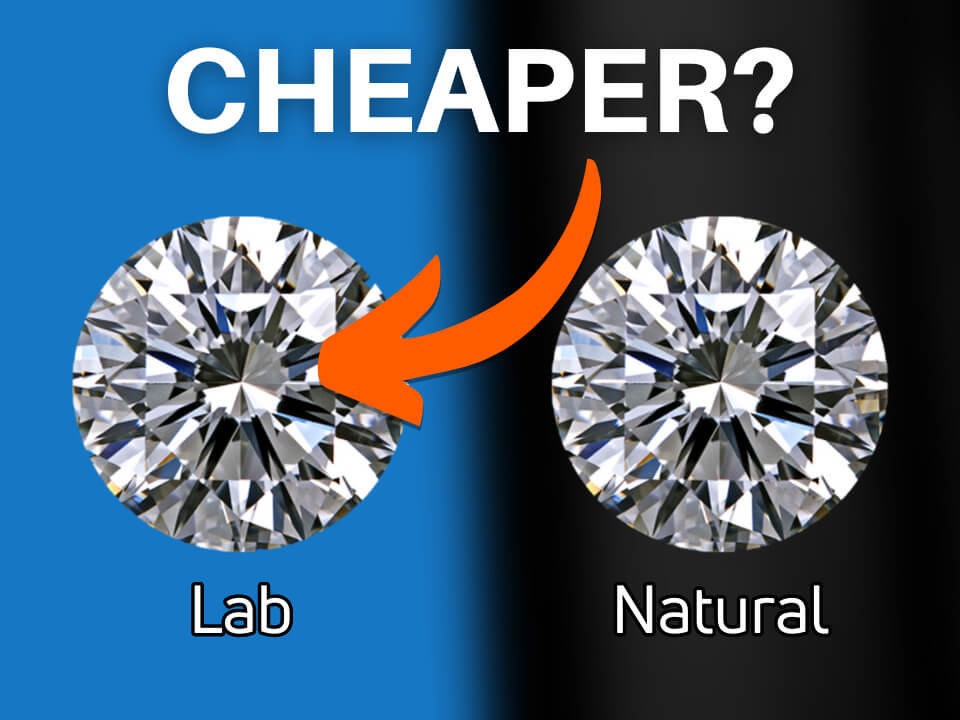The allure of diamonds has captivated humanity for centuries, serving as symbols of love, status, and beauty. However, recent advancements in technology have introduced a new player to the diamond industry: lab-grown diamonds. These ethically and environmentally conscious alternatives to natural diamonds have sparked a spirited debate among consumers, jewelers, and enthusiasts alike. In this blog post, we will delve into the key differences between lab-grown and natural diamonds, exploring their creation processes, ethical implications, environmental impact, and more.

The Creation Process: Nature vs. Nurture
Natural Diamonds: Formed deep within the Earth’s mantle over millions of years, natural diamonds are the result of intense heat and pressure acting upon carbon atoms. The journey from the depths of the Earth to the surface involves volcanic activity, pushing these precious stones to the surface in what we know as diamond-bearing rock formations.
Lab-Grown Diamonds: In contrast, lab-grown diamonds are cultivated through advanced technological processes that mimic the conditions under which natural diamonds form. High-pressure, high-temperature (HPHT) and chemical vapor deposition (CVD) techniques are used to create an environment where carbon atoms can bond together and crystallize into diamonds. The result is a diamond with the same physical, chemical, and optical properties as its natural counterpart.
Ethical Considerations: A Conflict-Free Choice
Natural Diamonds: The diamond mining industry has faced scrutiny for its association with unethical practices, including human rights abuses, environmental degradation, and conflict financing through “blood diamonds.” These diamonds, often mined in war zones and sold to fund armed conflict, have raised concerns about the ethical origins of natural diamonds.
Lab-Grown Diamonds: One of the key advantages of lab-grown diamonds is their conflict-free origin. By circumventing the need for traditional mining, these diamonds offer consumers the reassurance of supporting an industry that prioritizes ethical sourcing and responsible practices.
Environmental Impact: Carbon Footprint and Sustainability
Natural Diamonds: Diamond mining requires significant land disruption, water usage, and energy consumption. The carbon footprint associated with extracting, processing, and transporting natural diamonds is substantial, contributing to environmental concerns.
Lab-Grown Diamonds: Lab-grown diamonds have a notably smaller environmental footprint. While energy-intensive in their production phase, they consume significantly fewer resources compared to traditional mining operations. Additionally, advancements in renewable energy sources could potentially further reduce their environmental impact over time.
Quality and Aesthetics: Is There a Difference?
Natural Diamonds: The allure of natural diamonds lies in their rarity and uniqueness. Each natural diamond possesses distinct characteristics, often accompanied by imperfections or “inclusions” that contribute to their individuality.
Lab-Grown Diamonds: Lab-grown diamonds are virtually indistinguishable from natural diamonds to the naked eye and even to many gemologists. However, some may argue that the lack of natural rarity may impact the sentimental value associated with lab-grown diamonds.
Price and Accessibility: A Shift in the Market
Natural Diamonds: The natural diamond market is tightly controlled, with prices often influenced by supply and demand dynamics, as well as marketing efforts. This can lead to fluctuating and sometimes exorbitant prices.
Lab-Grown Diamonds: Lab-grown diamonds offer a more affordable alternative to natural diamonds, making these precious stones accessible to a broader range of consumers without compromising on quality or aesthetics. Lab created diamonds are typically between 30-70% cheaper than natural diamonds.
Bottom Line
The debate between lab-grown and natural diamonds is multifaceted, encompassing considerations of ethics, environmental impact, aesthetics, and accessibility. While both types of diamonds have their merits and drawbacks, lab-grown diamonds are undoubtedly reshaping the jewelry industry by providing a more sustainable, ethically conscious, and economically accessible option for consumers seeking the beauty and brilliance of these iconic gemstones. As technology continues to advance and awareness of ethical and environmental concerns grows, the choice between lab-grown and natural diamonds may become less about status and more about values, allowing individuals to express their love and admiration while aligning with their personal convictions.
